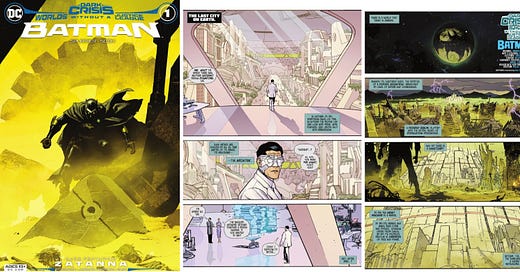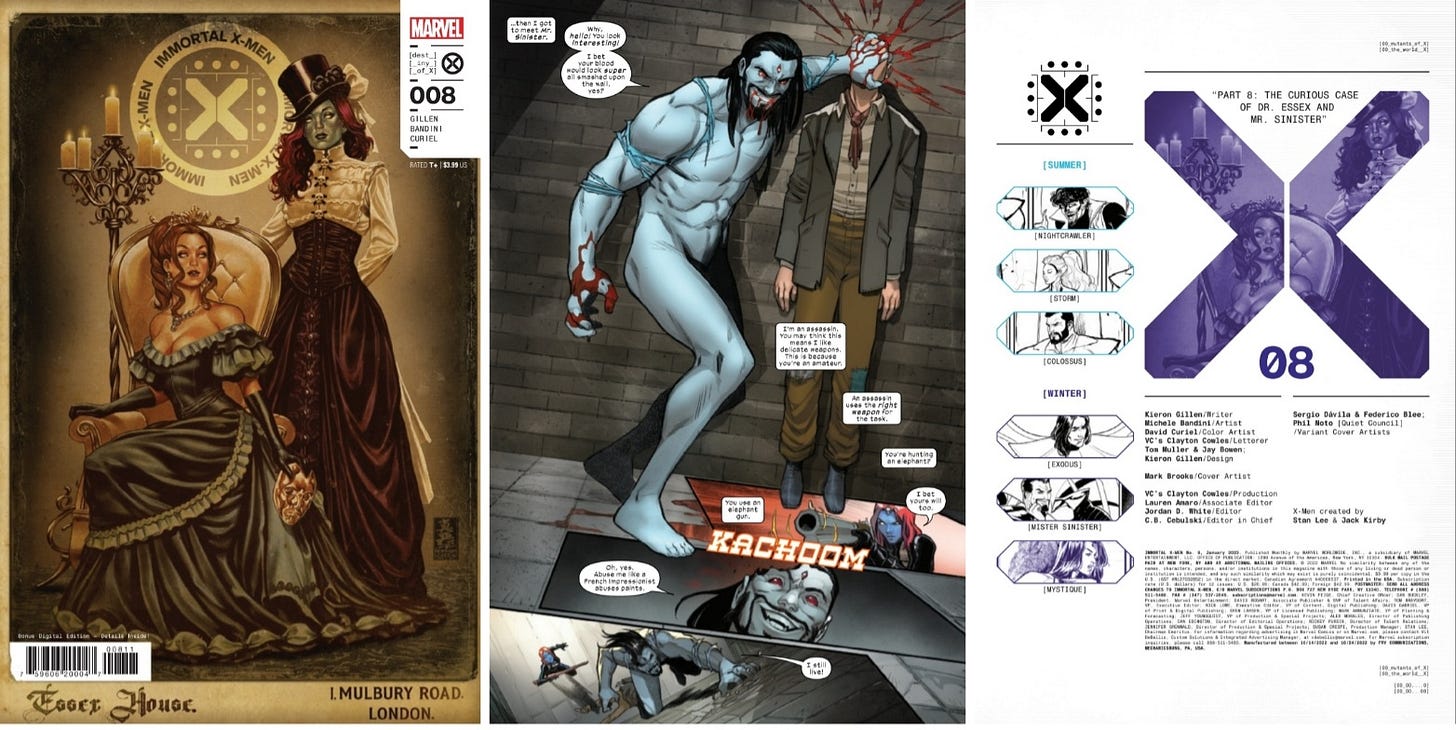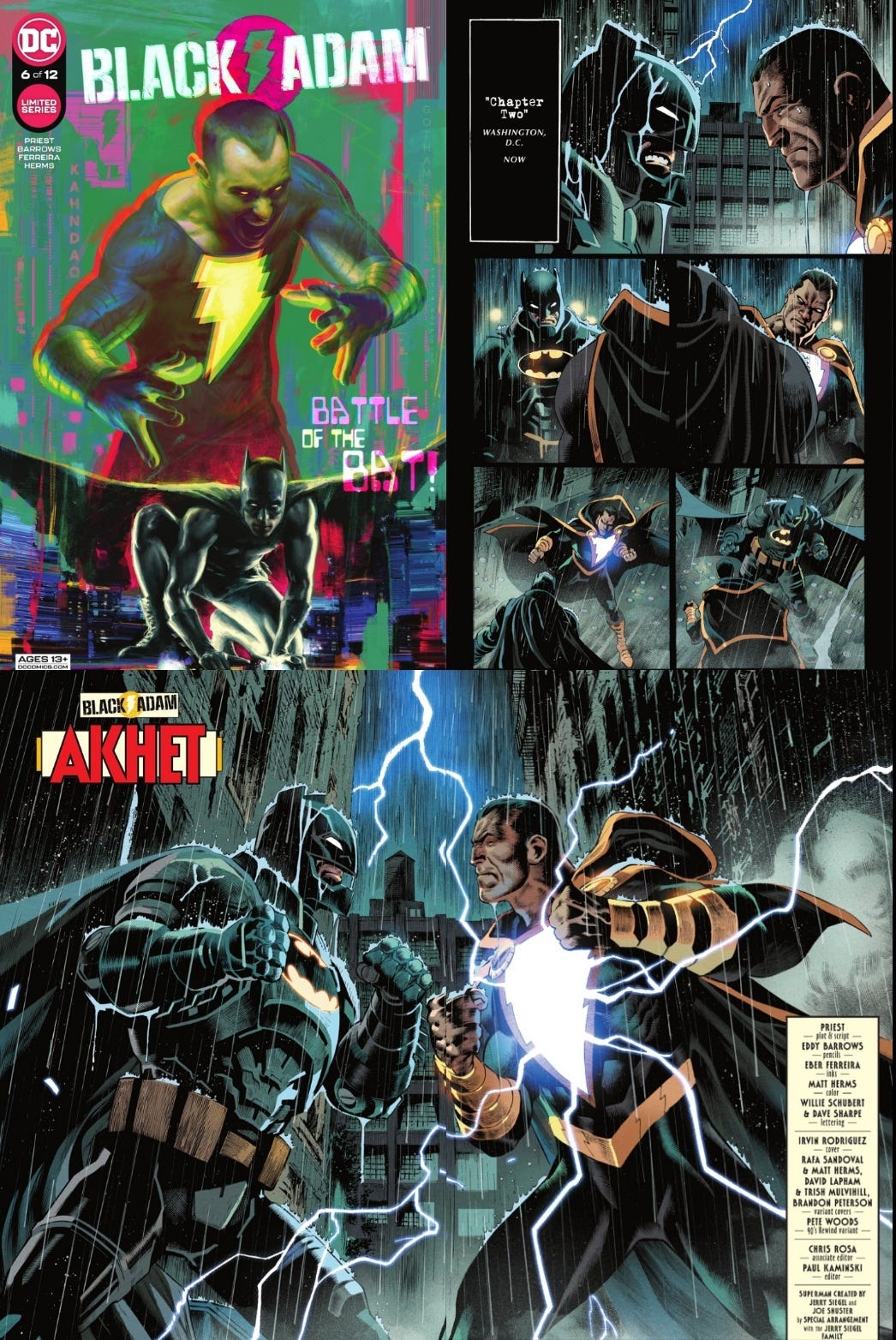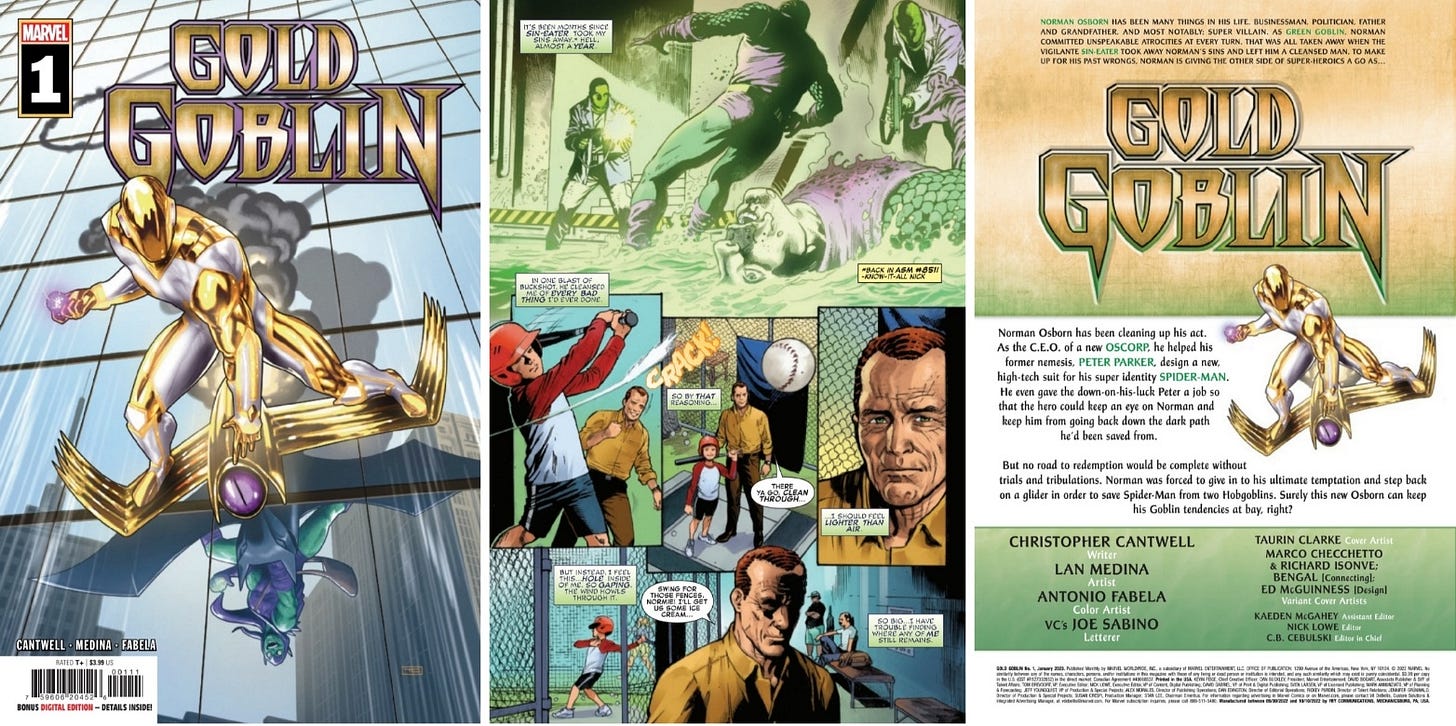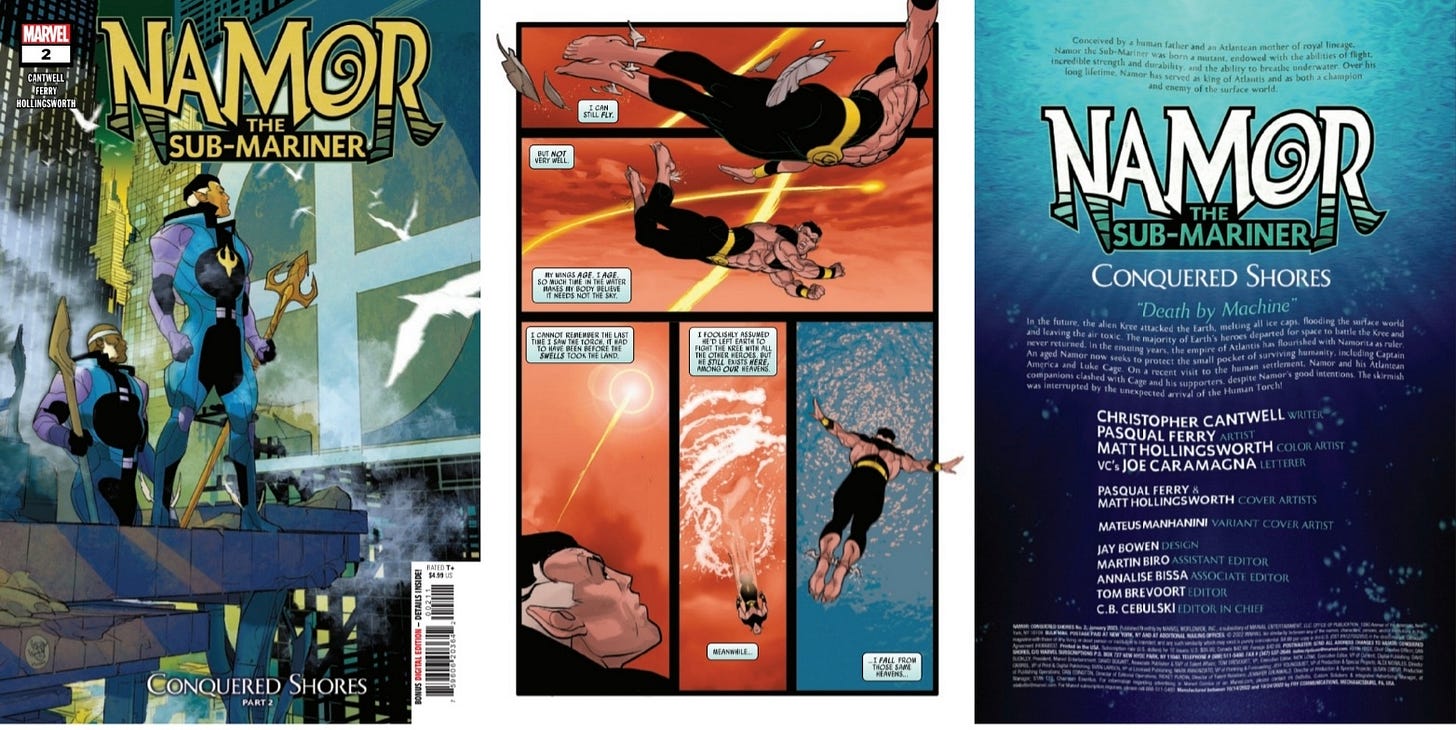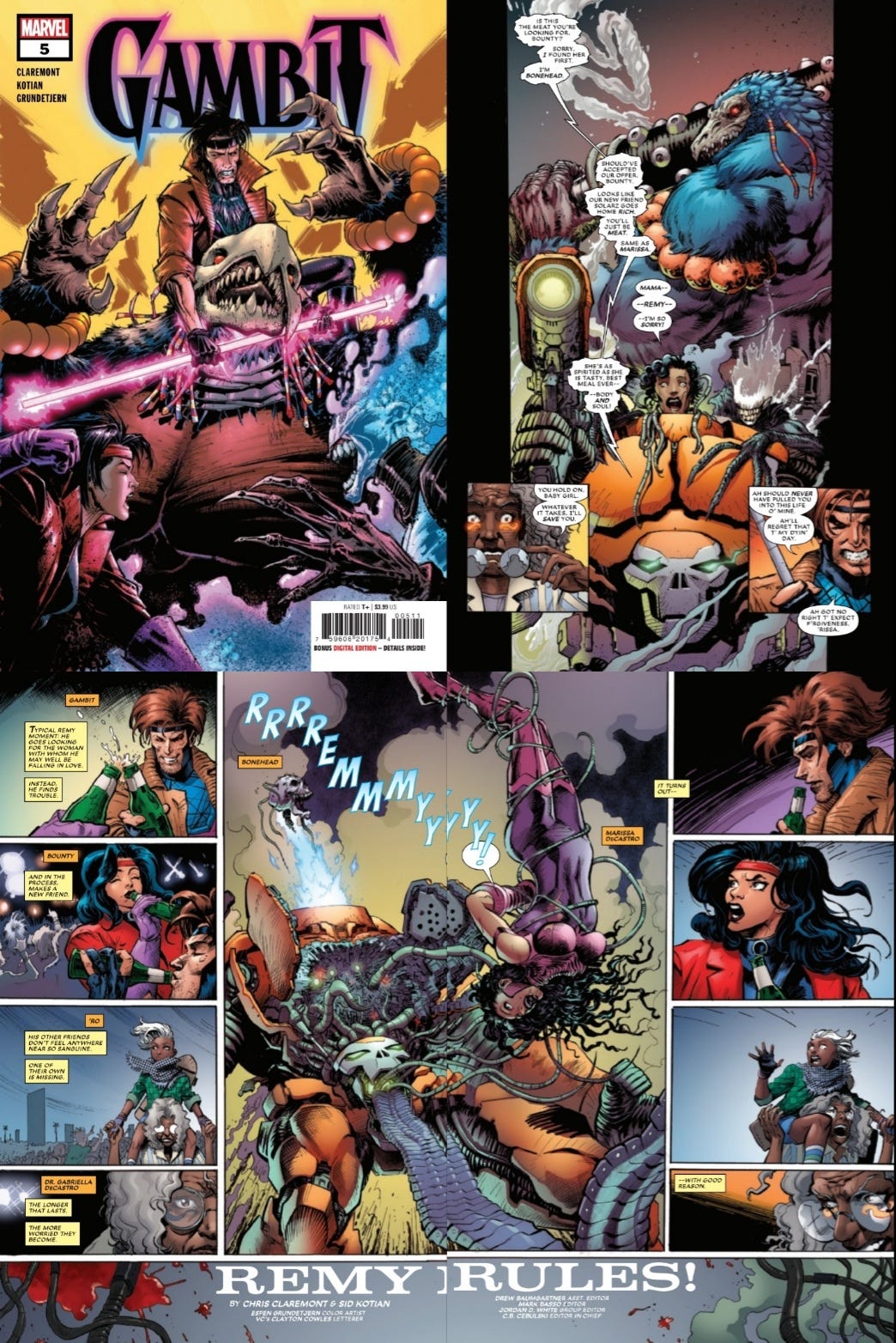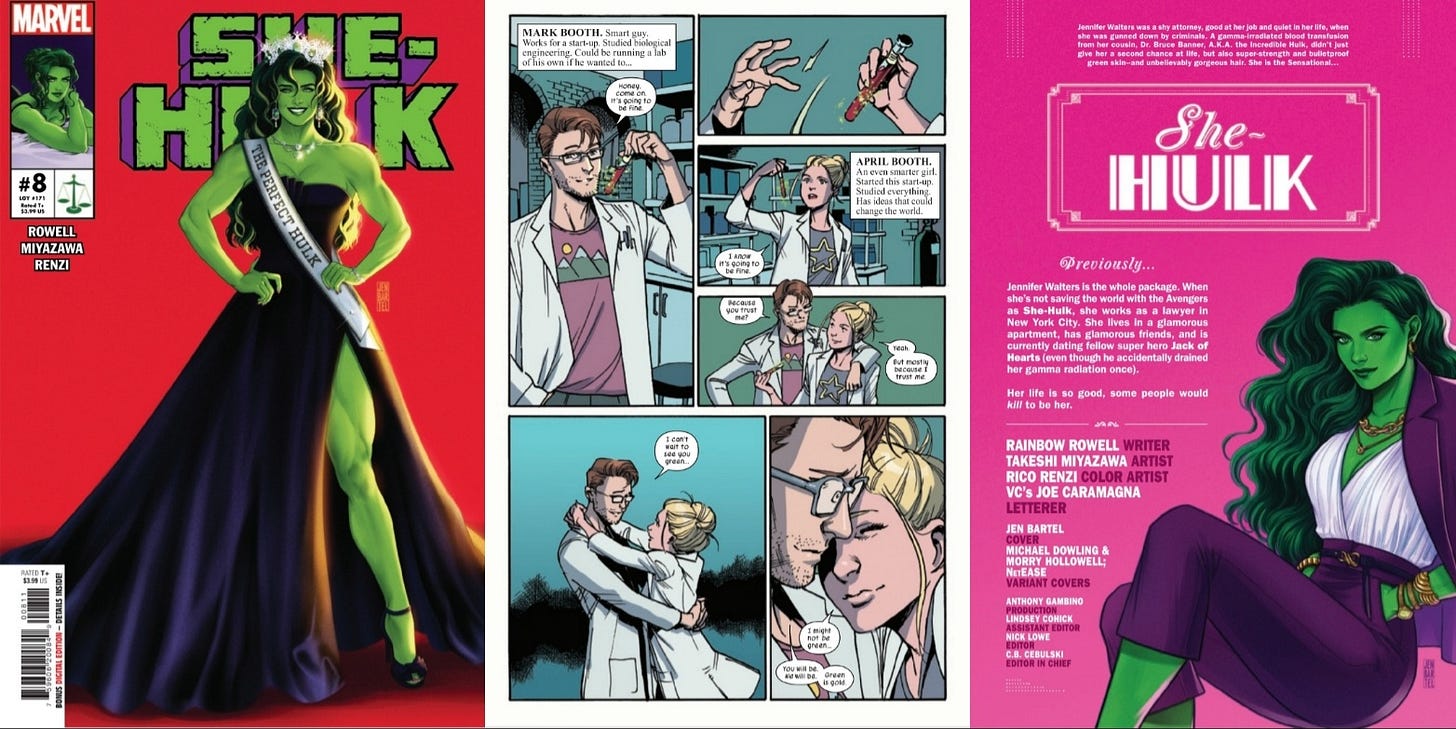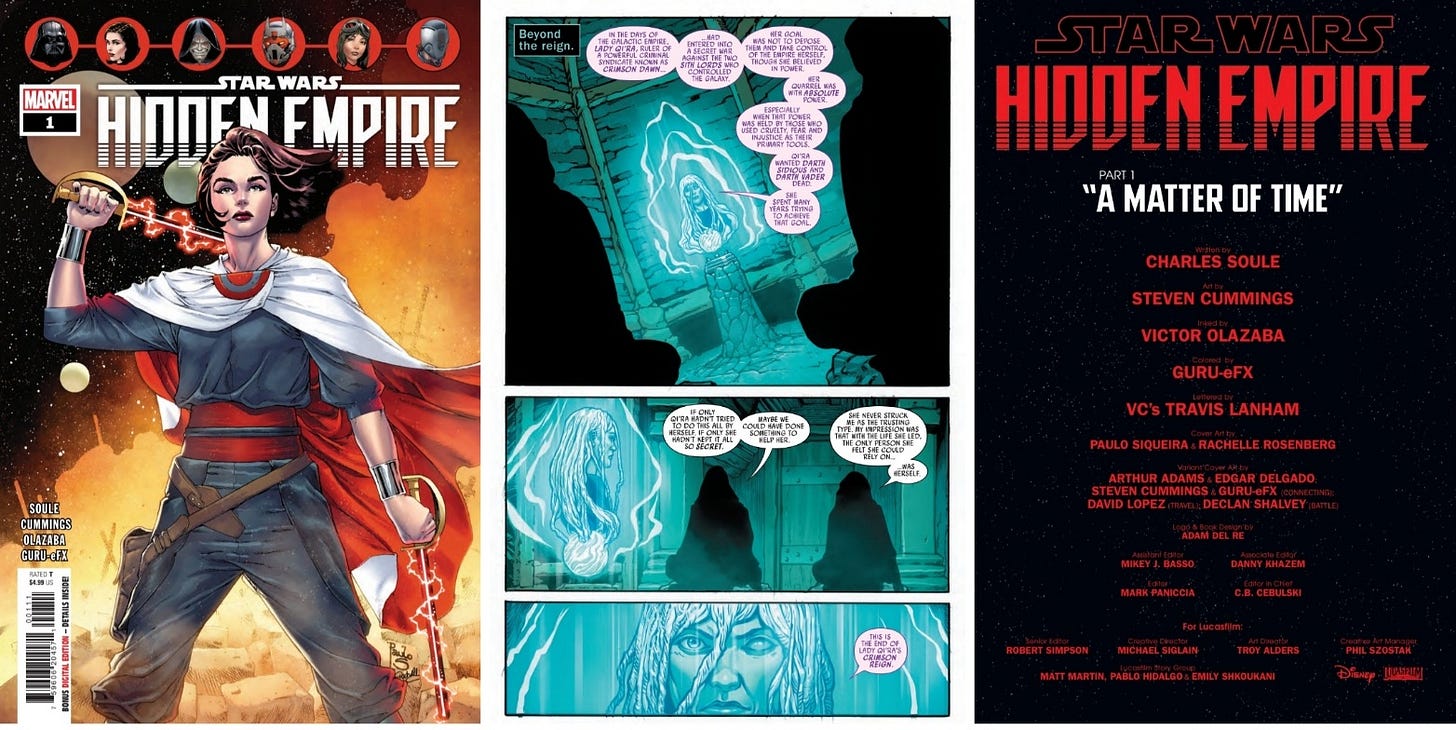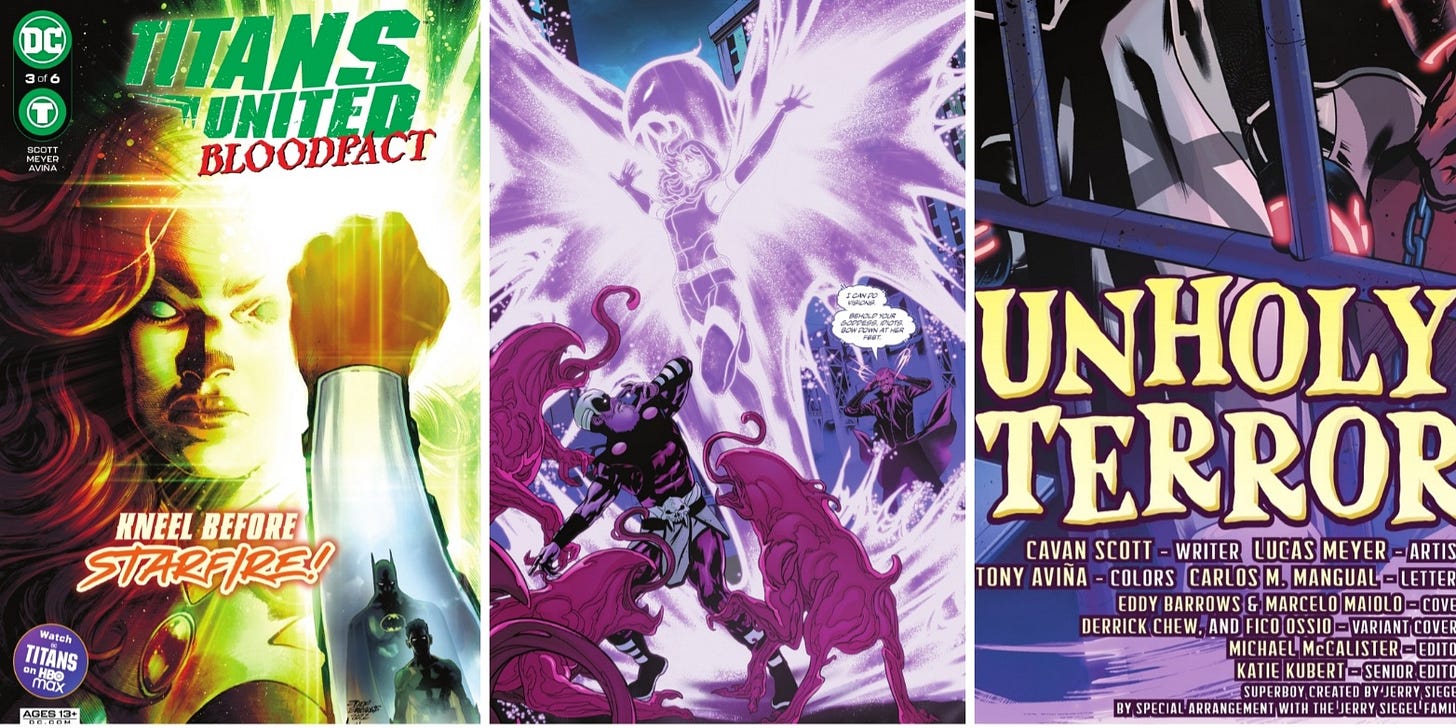Welcome to this week’s review roundup!
Every week I post mini reviews on Twitter. I also post links to all longform reviews I’ve written that week for Comic Watch and The Comic Book Dispatch. On a given week I cover anywhere from 15-25 book.
And you can get them all here! Every one for the week without hunting for my Twitter feed. So let’s get started.
Captain America and the Winter Soldier Special
Steve wanted to work slowly, from the outside, fighting the Outer Circle through above-board and legitimate means. Bucky, on the other hand, wanted to use any and all means to destroy them after learning how they’ve manipulated him over the years…
Dark Crisis: World Without a Batman
Spurrier explores the Batman/Bruce Wayne duality in this issue to great effect. He literally splits them apart. There’s the Bruce Wayne side (Architek) that operates in the light and wants to build while the Batman equivalent (The Night) works in the dark and ultimately finds himself at cross purposes with Architek.
The story takes place in a plague ridden world where only Gotham City has survived. It’s an interesting setting considering that for the most part, Bruce Wayne and Batman operate almost entirely in Gotham in the real world. This comes across almost as a metaphor for obsessive behavior–the inability of the character to leave his city or rest while it needs help. In fact the story development that resolves the issue plays very much into that idea.
Sook handles all the art duties on the issue. The colors are particularly compelling. The environment that Architek occupies is mostly white with light purple highlights. It’s not exactly warm but it is clean and nevertheless inviting. Sook sets every other scene in the dark, whether colored with green, yellow, red, or blue. This darker aesthetic takes up so much of the issue that it feels like the clean Gotham is a fake construct, built on the world The Night occupies.
Immortal X-Men #8
Once again Gillen spends the entire issue on a strong character focus rather than developing the plot. In this case Sinister is prominent which could somehow play into the upcoming X event. But relatively little actually happens.
Mystique and Destiny also feature in the issue as GIllen takes advantage of the fact that all three characters are very long lived by setting the story primarily in 1895.
The issue also spends no time dealing with any kind of political fallout from Judgment Day besides paying very brief lip service to it in the issue recap. Its presence in the recap suggests it may play a part in the issue but that is not the case.
Gillen tries to inject heavier meaning with cryptic hints about Destiny maybe knowing something (or maybe not) as it relates to Sinister and the future. And there are ongoing references to different men named Charles, all of whom seem to present potential problems. Most of them have last names but not all so there is a heavy suggestion that Charles Xavier is one of those that will cause trouble in the future.
Ultimately the issue is another mysterious contribution to the sense that this series is doing nothing but treading water.
Black Adam #6
Priest continues the Batman plot here with a fight that fills most of the issue. Along the way the two shout at each other over Adam’s worth, anger, and emotional powerlessness. Batman emphasizes Adam’s history and how it influences him. Adam will hear none of it. He also pushes back with talking points about why he rules his country the way he does and why giving it democracy overnight would be a bad idea (this directed at Batman because Bruce is funding pro-democracy rebels).
The dialogue about Black Adam’s past and his emotional state is compelling and there’s the possibility that it will lay the foundation for more character exploration along these lines as the series progresses (though a couple twists in the story here leave me doubtful that the series will ultimately go in that direction). But I do miss Malik and the other subplots at work.
Eddy Barrows draws this issue. He handles the action sequences ably. There is a lot of energy behind the conflict, and it feels like it builds in intensity in the art as well as the story so by the end there’s significant power behind what Batman and Black Adam are throwing at each other. Barrows excels at close ups on the characters’ face–something critical because there are many such panels. Priest wrote emotional, angry characters and there’s no doubt of that visually.
Murderworld Avengers
There may be no greater murderous sociopath in the Marvel universe than Arcade. Beyond that he has few ambitions. Most writers show him at his happiest when he’s trying to kill as many people as possible–especially when he has the chance to go after heroes…
Gold Goblin #1
Cantwell turns in a surprisingly effective issue that handles the emotional aftermath of Sin-Eater taking away Norman’s sins issues earlier. This is what has been missing from Amazing Spider-Man. Peter’s attempts to build some kind of normalized relationship with Norman ring somewhat hollow in that series because there has been very little time spent addressing how Norman feels about what he has done. Just because his sins are gone doesn’t mean he lacks the memories.
The closest Amazing Spider-Man has delivered along these lines is the “Judgment Day” tie-in that acknowledges Norman going through his own judgment.
Cantwell writes a very interesting Norman here. As someone who has never been a fan of Norman’s reincarnation–to say nothing of some kind of normalization of the character–I found myself deeply invested in him. It’s still somewhat questionable as a matter of background world building why Norman is a free man. But here we see that he is, in some ways, a prisoner of his own mind and memories.
Also well done is how the name “Gold Goblin” was not something he thought up–rather he was dubbed that by the news media. He’s viewed as a hero (this pushed my suspension of disbelief), but the name “Goblin” evokes powerful emotions.
The Deadliest Bouquet #4
Unsurprisingly, it was inevitable that everyone involved in this investigation–all three sisters and the police–were going to smash into each other. It looks like The Deadliest Bouquet #4 is where that starts to happen…
Namor Conquered Shores #2
Cantwell’s Namor is fascinating. In some ways he’s like the dog that catches the car. What is he supposed to do now? In the first issue we saw how his dislike and ambivalence toward mankind softened–to a point. Now that Atlantis is in charge he can afford a measure charitability.
Namor and Luke Cage set off on a quest to find the original Human Torch, Jim Hammond, after seeing him fly overhead at the end of last issue. A few Atlanteans report that the technology behind Torch could improve the undersea human settlements and allow the humans within them to become self-sufficient.
Along the way Luke and Namor find themselves in the Baxter Building. New York is mostly a wasteland, but a few of the bigger buildings still stand. This leads to a wonderful moment as Namor finds himself reflecting on what he’s lost in a very personal way. It’s an effective way to take his large-scale, somewhat clinical approach to humans–wanting to help them out of a measure of charity but not going too far in the process–and distill it down to a man with regret–possibly deep regret over his past actions. Even if there is only one human he feels he lost.
Dark Crisis: Young Justice #6
While Fitzmartin does resolve the plot she set up in Dark Crisis: Young Justice, she utterly fails to resolve any of the character arcs she followed in the previous five issues…
Gambit #5
The series ends somewhat with a whimper here, and while it’s unfair to judge a story against the expectation of what it could have been there is a feeling here that the series never lived up to the possibilities Claremont introduced with ‘Ro in the first issue. Granted, Gambit is the titular character so finishing it with the end of an emotional arc for him is appropriate. But in some ways it feels like Claremont is attempting to retroactively establish Gambit as someone who is more likely to build emotional connections on the way to an actual relationship.
That said, Claremont writes and Kotian draws one hell of an action sequence that takes up most of the issue. The outcome comes close to bordering on body horror. Visually this gives a little extra push to Gambit’s display of emotion. But it also feels slightly gratuitous since this is a character and relationship that obviously cannot stay in Gambit’s life going forward.
Batman One Bad Day: Mr. Freeze
The issue’s plot, as with so many Mr. Freeze stories, centers around Freeze researching Nora’s condition. In this case, though, Batman–at Robin’s urging–gives him a facility to conduct his research in an effort to help him cure his wife…
She-Hulk #8
This is a surprising outing. The previous issue returned to the series’ bad guys as they kidnaped She-Hulk at the end. Rowell had moved away from the duo for several issues, focusing mainly on the budding relationship between She-Hulk and Jack.
Well they are back in a big way here as Rowell spends the entire issue with them. We solely follow the duo–through their romance, their scientific research, and their developing obsession with She-Hulk.
For a good chunk of the issue Mark and April, our “villains”, are very sympathetic. Even as we learn what their goal is, Rowell manages to keep them very human. A large part of this is a result of Rowell repeatedly turning back to their romance. She doesn’t have the opportunity here to stretch the romance over several issues like she has with She-Hulk and Jack but she manages to keep it quite charming.
Takeshi Miyazawa handles the art on this issue and it’s a noticeable departure in style. As an issue solely devoted to these two characters, the change in style works and gives Mark and April a very different feel from characters in previous issues.
Star Wars Hidden Empire #1
This is a heavily exposition focused issue with extensive narration and long winded dialogue. Soule does a reasonably good job keeping it moving along by creating a significant conflict between Qi’ra and Emperor Palpatine. Even so, it’s a conflict that is primarily fought via dialogue over holograms rather than action. In this way the issue is not impenetrable but fairly slow. It will rely heavily on the reader’s prior interest in Star Wars to hold their attention.
More compelling is the art by Cummings and Olazaba. With so much of the issue focused on dialogue, there is a significant need to keep the book visually interesting and the art duo succeeds here. They achieve this mainly by keeping the characters expressive. From facial expression to posture to body language these are interesting people and they did keep me reading and leave me wanting more at the end of the issue.
Titans United: Bloodpact #3
Tim is a little more in the background in this issue as the story expands to involve Dick and Starfire. We’re at the point in a “world gone wrong” story where the main characters remember who they are and set off to fix whatever has gone wrong. Its fairly predictable.
The way Dick gets through to Starfire is clever enough though not necessarily original. This is the kind of thing that has the potential to irk some fans though it is not a troll.
The most important thing we get is finally seeing how Raven works in this world and it turns out to be rather surprising which is so far the best thing about this story because it takes it in a slightly different direction.
The best part of this issue is actually Aviña’s colors. They’ve been vibrant throughout the series, and they play a very nice part in the battle with Starfire. He does a very good job with Raven as well. Visually it is a captivating issue.
Did you enjoy the post? Feel free to share it! Want to add to the discussion? Drop a comment! Want reviews and other content straight to your inbox?
Find my content all over the internet.
And if you’re into video games, I do walkthroughs with detailed story analysis at Bookishly Gaming.

